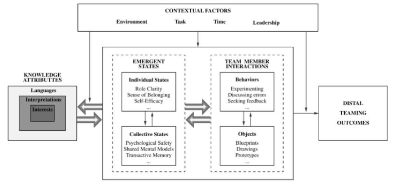CO-CREATION
IN PRACTICE
TOPIC 2
Learning environment to interrelate a programme and the professional field
An authentic learning environment involves contexts, assignments, and activities that are highly reliable, credible, and real for, in this case, the future professional field and/or professional activities. The premise that an authentic learning environment facilitates learning features several aspects:
- Social constructivism emphasises that learning always involves situated learning: the context in which the learning takes place determines the ultimate meaning of what has been learned. Learning in an authentic context will help the learner to see the relevance of and give meaning to what is being learned, thus making it easier to link it to prior knowledge that is already in place.
- As the knowledge has gained meaning, its transfer (the ability to use the knowledge, skills, and attitudes) to other contexts will be easier. Such a transfer can be encouraged additionally by confronting students with various contexts, which will enhance their conceptual learning.
- As the relevance of what has been learned becomes manifest, an authentic learning environment will also comprise a (predominantly intrinsic) motivating factor. Compared to more traditional forms of teaching-learning activities, students tend to be more involved in authentic teaching-learning activities. Moreover, engaging in an authentic assignment may have a positive impact on students’ confidence in their own actions (Lombardi, 2007).
Starting professionals need to have developed knowledge, attitudes, and skills in an integrated manner in order to enable their efficient operation in their future workplace. An authentic design of the learning environment supports such an integration. Departure from an authentic learning environment may help graduates to bridge the difference between the two worlds, that of the university of applied sciences and that of the workplace.
Points for attention when substantiating this interrelation, particularly regarding the workplace learning format, include (Hoeve & van Vlokhoven, 2017), (Nieuwenhuis, Hoeve, Nijman, & van Vlokhoven, 2017)
- Design in concert with the professional field;
- Learn to speak a common language;
- Prepare students consciously;
- Dissolve the boundaries between the programme and the workplace;
- Counsel the students in their professional growth;
- Provide the students with diverse workplaces;
- Allow the students room for mistakes and repetition;
- Offer the students room to sample the culture;
- Support the work supervisor;
- Organise reflection and feedback;
- Assure the quality of workplace learning.
INSPIRATION
CASES
Model Edmonson en Harvey
Edmonson en Harvey (2018) bestudeerden grensoverschrijdende teams voor innovatie. Ze presenteren een model met een aantal factoren waarmee je rekening moet houden bij het werken in multidisciplinaire teams die gericht zijn op innovatie (Edmondson & Harvey, 2017).

Community-driven onderwijs PXL
WORK-BASED LEARNING COMMUNITY
Thomas More
PAUW WORK PLACEMENT Erasmus Brussels University of Applied Sciences and Arts
Challenge Week Thomas More
#fab4+1 Odisee
